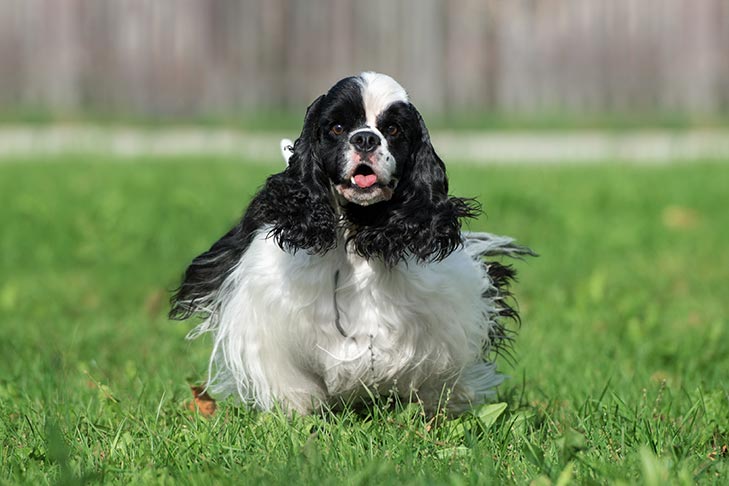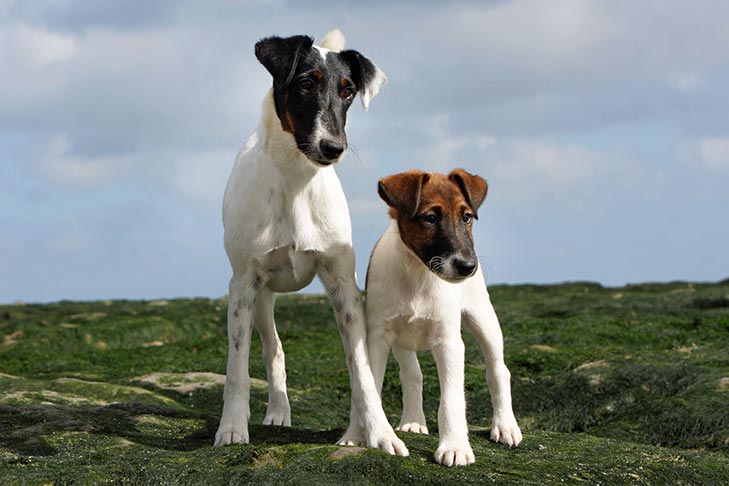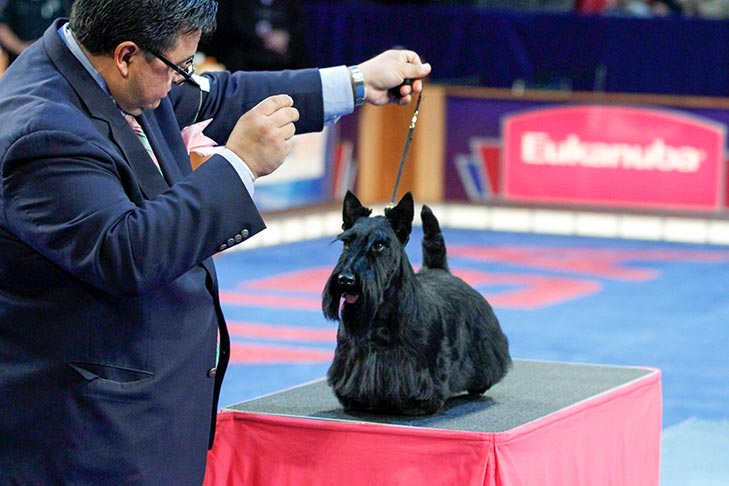
- boston terrier
- dachshund
- english springer spaniel
- pekingese
- scottish terrier
- cocker spaniel
- smooth fox terrier
- most popular
- boxer
- beagle
- most popular breeds
- collie
No doubt spurred on by the famous Best in Show wins of My Own Brucie in the early 1940s, accompanied by this handsome dog’s likeness appearing on the cover of Life, the Cocker Spaniel became the country’s number-one dog. The breed enjoyed the number-one ranking for sixteen years, from 1936 to 1952.
Although the Pekingese never became a number-one breed, it ranked in the top ten for six consecutive decades, from the 1910s through the 1960s, reaching its apex thus far as the number-four breed of the 1920s.
1. Cocker Spaniel (American and English, All Colors)

Coming in at number two are Cocker Spaniels, both American and English. The spaniel family is a large one of considerable antiquity. As far back as the 14th century, we have mention of the Spanyell, which came to be divided into water and land spaniels. Further divisions in land spaniels were based on size. “Cockers” were the smaller of the two types of spaniels and are to this day the smallest in the Sporting Group.
2. Beagle (13 and 15 inches)

The actual origin of the Beagle seems to be obscure because of the absence of reliable documentation on the earliest days of development. The turning point for American Beagles came in the 1860s when dogs from a well-bred strain in England were imported to inject a beautiful breed type.
3. Boston Terrier

The Boston Terrier is a true American creation, bred as a cross between an English Bulldog and a white English Terrier. The new breed’s supporters established the Boston Terrier Club of America in 1891, changing the name of the breed to Boston Terriers, named after the city where the breed originated.
4. Collie (Smooth and Rough)

The precise origin of the Collie remains an enigma, but the two varieties, the rough-coated and the smooth-coated, existed long ago in the unwritten history of the herding dogs of Scotland and northern England. Prior to the past two centuries, both varieties were strictly working dogs without written pedigrees.
5. Boxer

Although the breed has reached its greatest level of perfection in Germany during the past 100 years, the Boxer springs from a line of dogs known throughout Europe since the 16th century. Prior to that time, ancestors of the breed would hardly be recognized as Boxers. Still, evidence points to the Boxer as one of the many descendants of the old fighting dog of the high valleys of Tibet. The Boxer is cousin to practically all recognized breeds of the Bulldog type and these can be traced to basic Molossus blood.
6. Dachshund (Longhaired, Smooth, and Wirehaired)

The Dachshund can be found in historical accounts dating back to the 15th, 16th, and 17th centuries, when illustrations reflected badgers being hunted with dogs with elongated bodies, short legs, and hound-type ears. Early in the 17th century, the name “Dachshund” (badger dog) became the designation of a breed type with smooth and longhaired varieties. In 1890, wirehairs were added as a third variety.
7. Pekingese

The earliest known record of the Pekingese, also known as the “Lion Dog,” is traced to the Tang Dynasty in China in the 6th century. Breeding of these little dogs reached a zenith during the Tao Kuang period (1821-1851). The oldest strains of the breed were kept amazingly pure. Imperial Dog Books, illustrated with pictures of the most admired dogs, were used as the standards.
8. Fox Terrier (Smooth)

One of the first records of the breed was made in 1790, when Colonel Thomas Thornton’s “Pitch,” a smooth-coated white Fox Terrier, was immortalized in print and paintings. Smooth Fox Terriers preceded the Wires in the show ring by 15 to 20 years. At first, they were classified as Sporting dogs, a tribute to their keen nose, remarkable eyesight, and stamina in driving foxes from their holes.
9. English Springer Spaniel

In the 1880s, Springers and Cockers were often born in the same litters, size alone being the distinguishing feature. In 1880, the American Spaniel Club was founded and it classified anything over 28 pounds as a Springer. Today, of course, the English Springer Spaniel is a distinct breed.
10. Scottish Terrier

The Scottish Terrier as we know them today has been bred in purity for many years. The first show to have a class for the breed was in Birmingham, England in 1860. A number of later shows carried this classification, but the dogs shown in these classes were not Scottish Terriers, but Skye Terriers, Dandie Dinmont Terriers, and Yorkshire Terriers.

